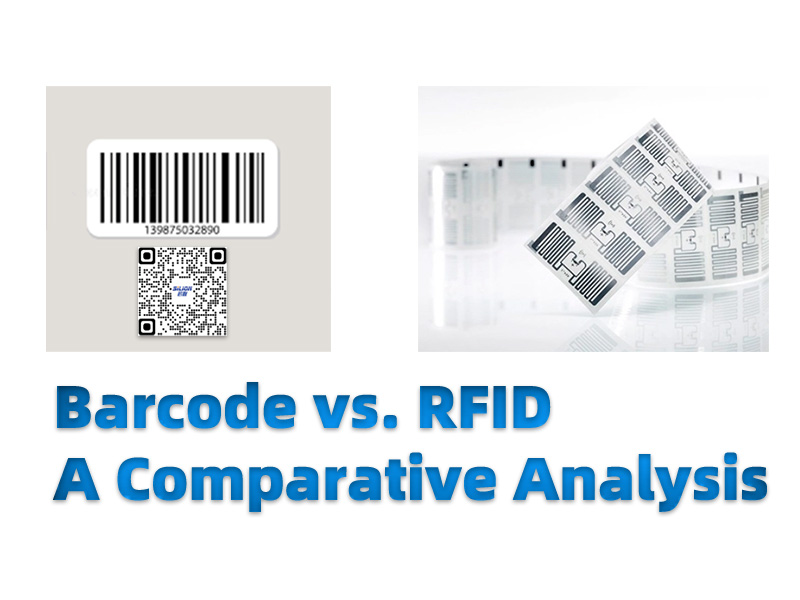Your location: Home Page > RFID Blog | SILION TECH > Barcode vs. RFID: A Comparative Analysis
News and Information
Barcode vs. RFID: A Comparative Analysis
Author:2023-10-06 14:38:40
Introduction
When it comes to tracking and managing products, two popular technologies stand out: barcodes and RFID (Radio Frequency Identification). Both of these technologies help businesses keep track of their inventory, improve efficiency, and provide valuable insights into their operations. In this article, we'll break down these technologies in simple terms and compare them to help you understand which might be better for your needs.

Understanding Barcodes
Barcodes are like product fingerprints. You’ve probably seen them on almost every item you purchase. They consist of parallel lines of varying widths and spaces between them. Each combination of lines represents a unique code for the product.
How Barcodes Work?
Barcodes work by using a scanner, which emits a beam of light. This light bounces off the barcode's lines and spaces, and the scanner reads the pattern to identify the product. This code corresponds to information about the item stored in a database, like its name, price, and other details.
Cost-Effective: Barcodes are economical to produce and print. Most businesses find it affordable to implement barcode systems.
Easy to Implement: Setting up a barcode system is simple. All you need are barcode labels, a scanner, and software to link the scanned code to your product information.
Widespread Usage: Barcodes are prevalent across industries, making them a standard method for product tracking and inventory management.
Line of Sight Required: A barcode needs a clear line of sight for the scanner to read it accurately. If it’s smudged, torn, or folded, it may not scan correctly.
Limited Information: Barcodes can only hold a certain amount of information. If you need to store a lot of data, barcodes might not be sufficient.
Understanding RFID
RFID is a more advanced technology compared to barcodes. Instead of using lines, RFID uses radio waves to communicate between a tag (attached to an item) and a reader.
How RFID Works?
An RFID tags contains a microchip and an antenna. When the reader emits radio waves, the RFID tag picks them up and sends back the stored information to the reader. This information can include details about the product, its location, and more.
The Pros of RFID
No Line of Sight Needed: RFID tags can be read even if they're not visible. They can be read through packaging and from a distance.
Large Data Capacity: RFID tags can store a lot of information. This is especially useful for complex products or large amounts of data.
Quick Scanning: RFID can scan multiple items at once, making it much faster than scanning barcodes individually.
The Cons of RFID
Cost: Implementing RFID can be expensive initially due to the cost of RFID readers and tags
Complexity: RFID systems are more complex to set up compared to barcodes, requiring more technical expertise.
Which One to Choose?
The choice between barcode and RFID depends on your specific needs and budget.
Choose Barcodes if:
Your budget is limited.
You're a small business or just starting.
Your products don't need to store a vast amount of information.
Choose RFID if:
You deal with high-value items or a large volume of products.
Quick and efficient scanning is essential for your operations.
You need to track products without a direct line of sight.
In the barcode vs. RFID debate, there's no one-size-fits-all answer. Each technology has its place and benefits. It's essential to evaluate your business requirements and weigh the pros and cons to determine which technology aligns best with your goals. Whether it's the simplicity of barcodes or the efficiency of RFID technology, both technologies have revolutionized the way businesses manage their products and streamline their operations.